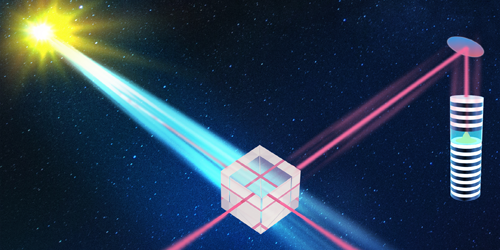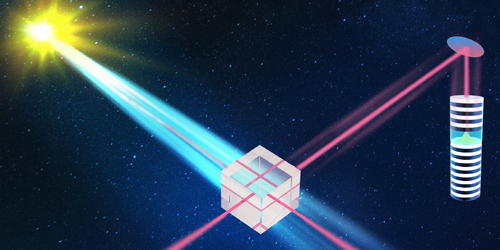Quantum Interference Across an Astronomical Distance
In 1987, a landmark experiment demonstrated a striking quantum optical effect: When two identical photons simultaneously enter a beam splitter, quantum interference forces both of them to bunch together and always exit from the same beam splitter port. Subsequent variations of the experiment have tested a variety of settings to show that photons from distant sources can show quantum interference. Now, a team of researchers has harnessed sunlight to demonstrate quantum interference between photons generated 150 million km apart, setting the stage for quantum optics experiments on astronomical scales.
These so-called Hong-Ou-Mandel experiments rely on devices that generate single, identical photons on command. The Sun, however, emits photons across a range of frequencies and polarizations and with uncontrollable arrival times. To turn it into a single-photon source, Chao-Yang Lu, at the University of Science and Technology of China, Shanghai, and colleagues hooked up a solar telescope to a series of fibers, filters, and gratings designed to spit out photons that match those generated by a semiconductor quantum dot in their lab. When they combined the two photon streams in a beam splitter, they found that when photons arrived simultaneously, they exited the same port 90% of the time.
This observation indicates interference above and beyond that expected from classical physics—showing that thermal light from a natural source can be used in quantum optical experiments. The team went on to generate entangled states between photons from the two disparate sources and demonstrated that such states clearly violated a Bell inequality, a test that unambiguously reveals nonlocal correlation between particles. The results suggest that sunlight could be used as an independent light source in certain quantum encryption schemes, the team says.
This research is published in Physical Review Letters.
–Christopher Crockett
Christopher Crockett is a freelance writer based in Arlington, Virginia.





